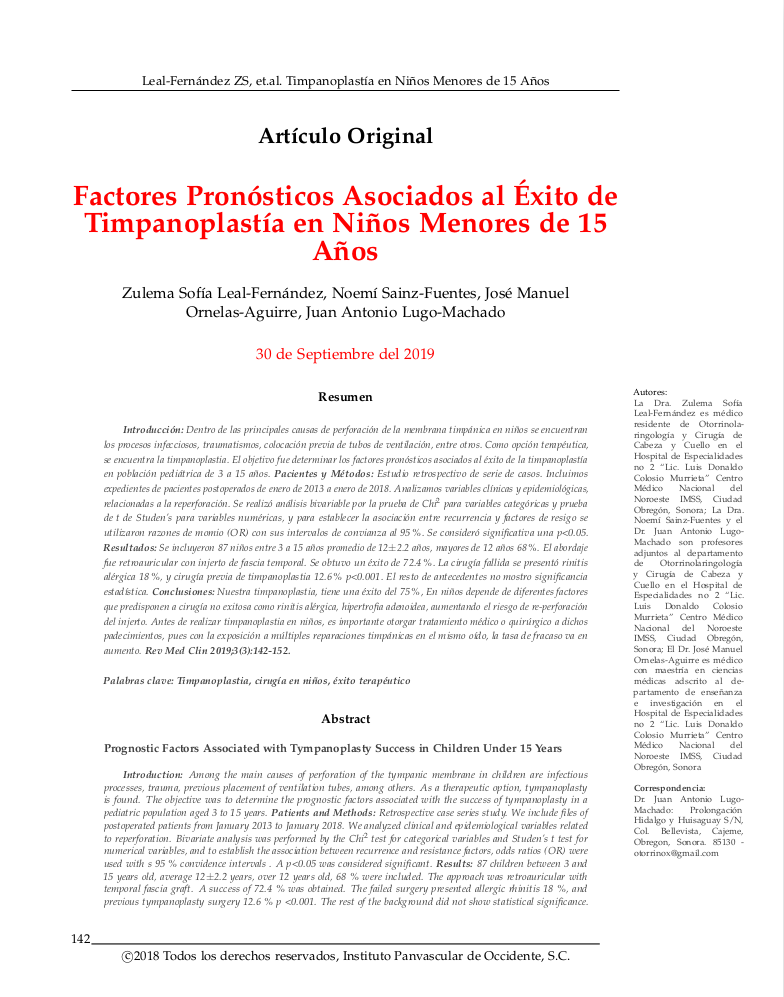Abstract
OBJECTIVE: To determine prognostic factors associated with the success of tympanoplasty in the pediatric population aged 3 to 15 years.
MATERIAL AND METHODS: Retrospective study of a series of cases. We include files of postoperative patients from January 2013 to January 2018. We analyze clinical and epidemiological variables related to reperforation. A uni-bivariate statistical analysis was performed to know the behavior of the variables, the Kaplan and Meier test for perforation recurrence in order to establish the weight of the various variables in the prognosis, using Hazard Ratios (HR), with 95% confidence intervals, a p-value equal to or less than 0.05 was considered significant.
RESULTS: We included 87 children between 3 to 15 years old, average of 12 ± 2.2 years, older than 12 years, 68%. The approach was retroauricular with a temporary fascia graft. A success of 72.4% was obtained The failed surgery presented allergic rhinitis 18%, and previous surgery of tympanoplasty 12.6% p = 0.000, the rest of the antecedents did not show statistical significance.
DISCUSSION: Our tympanoplasty has a 75% success. In children, it depends on different factors that predispose to unsuccessful surgery such as allergic rhinitis, adenoid hypertrophy, increasing the risk of re-perforation of the graft. CONCLUSION: Before performing tympanoplasty in children, it is important to grant medical or surgical treatment to such ailments, since with exposure to multiple tympanic repairs in the same ear, the failure rate is increasing.

This work is licensed under a Creative Commons Attribution-NonCommercial-NoDerivatives 4.0 International License.
Copyright (c) 2019 Clinical Medicine Journal

